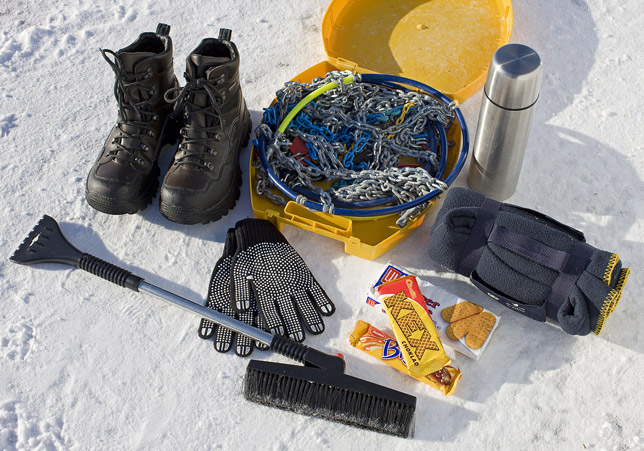Winter Vehicle Prep
Winter time proves challenging in the Oklahoma area. Unlike some states, the cold season here usually starts in January. More often than not, cold snaps occur when least expected followed by a relatively warm session. Many a time I have spent Christmas Day and New Year’s Day in a pair of shorts and T-Shirt. Such warm days can quickly be followed by cold days with rain, sleet, snow, and ice. As we begin this winter, please prepare your vehicle for the upcoming climate change.
Climate change in Oklahoma can occur in a matter of minutes instead of days. As such consider keeping the following items in your vehicle:
• Wool or quilted blankets
• Extra water
• Flashlight(s)
• Road Emergency Signaling device(s) – i.e., road flares, reflective triangles
• Gloves
• Scarf
• Insulated hat/head covering
• Extra socks
• Snacks/MRE
• Snow chains (you’ll wish you had a set when you don’t)
• 50lb bag of sand (used to weight vehicle for better traction)
Accidents occurring in winter temperatures can leave you stranded on the side of the road for extended periods of time. It’s never fun to change a tire on the side of the road when it’s warm and even less fun during cold weather. Accidents along the side of a well-travelled road allow for better chances of assistance from others. But if you are traveling along a country road far away from traffic and an accident occurs, waiting for help may take longer than you wish.

The last thing any driver needs during winter is an accident. With deer season, incidents involving deer impacts increase. But deer are not the only animal crossing the road tempting fate. As my wife and I discovered, a simple house cat crossing the road at night can cause extensive damage to a new car when traveling on a country road at 55 mph. Depending on how fast you were traveling and what size animal impacts the vehicle you’re driving, your vehicle may be disabled. Worse, you may be forced off the road and into the woods.
Unless you know exactly how far the nearest gas station is, never leave your vehicle in extreme cold weather! You have better chances of surviving inside your vehicle than you do wandering along the road for help. Call for help on your cell phone if you have a signal. Any injuries should be treated as necessary. If you are capable, use road signaling devices at the edge of the road to signal for help if your vehicle is more than 10 feet off the road. Access your blankets to stay warm if your vehicle heater will not work. Eat and drink accordingly, but ration your supplies if you think you may be spending more than a few hours. Accidents occurring at night tend to require longer wait periods than those during daylight.

Another circumstance that often leads to vehicle accidents on the road is black ice. Black ice usually occurs following a winter rain. Due to slightly warmer temperatures, rain may not freeze as it falls. Once on the cold roadway, ice forms. Black ice is difficult to see because it is very thin and looks like oil. Should your vehicle slip on black ice, please refrain from slamming on the brakes or jerking the steering wheel. Always steering into the direction your vehicle is sliding. With anti-locking brakes, your vehicle may not lock up the wheels, but it can still slide. Remember, bridges ice before roads. The air flow under the bridge allows them to get cold faster than roadways.
Cold snaps can result in quick freezes. Bridges, on/off ramps, and less traveled roads freeze first. Whether you are in the city or traveling along a country road, be prepared. Add some warming layers in your vehicle as well as some food and water. Keep yourself and your family safe and warm this winter. One last thing, if you have never used snow chains, practice putting them on in warm weather. You’ll thank yourself for knowing how to do it before you find out you put them on wrong and they fall off. It’s never fun learning hard lessons in the cold.










